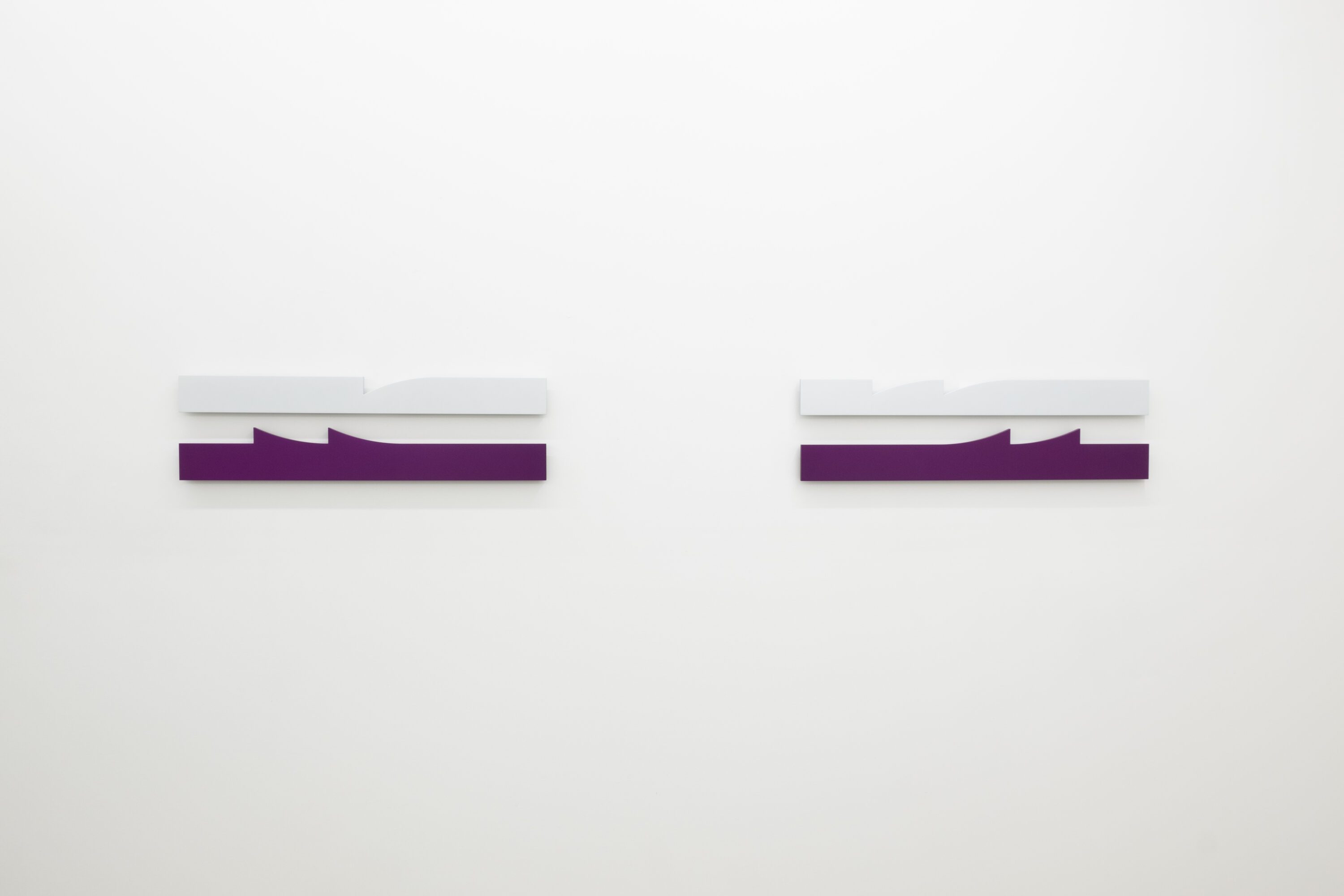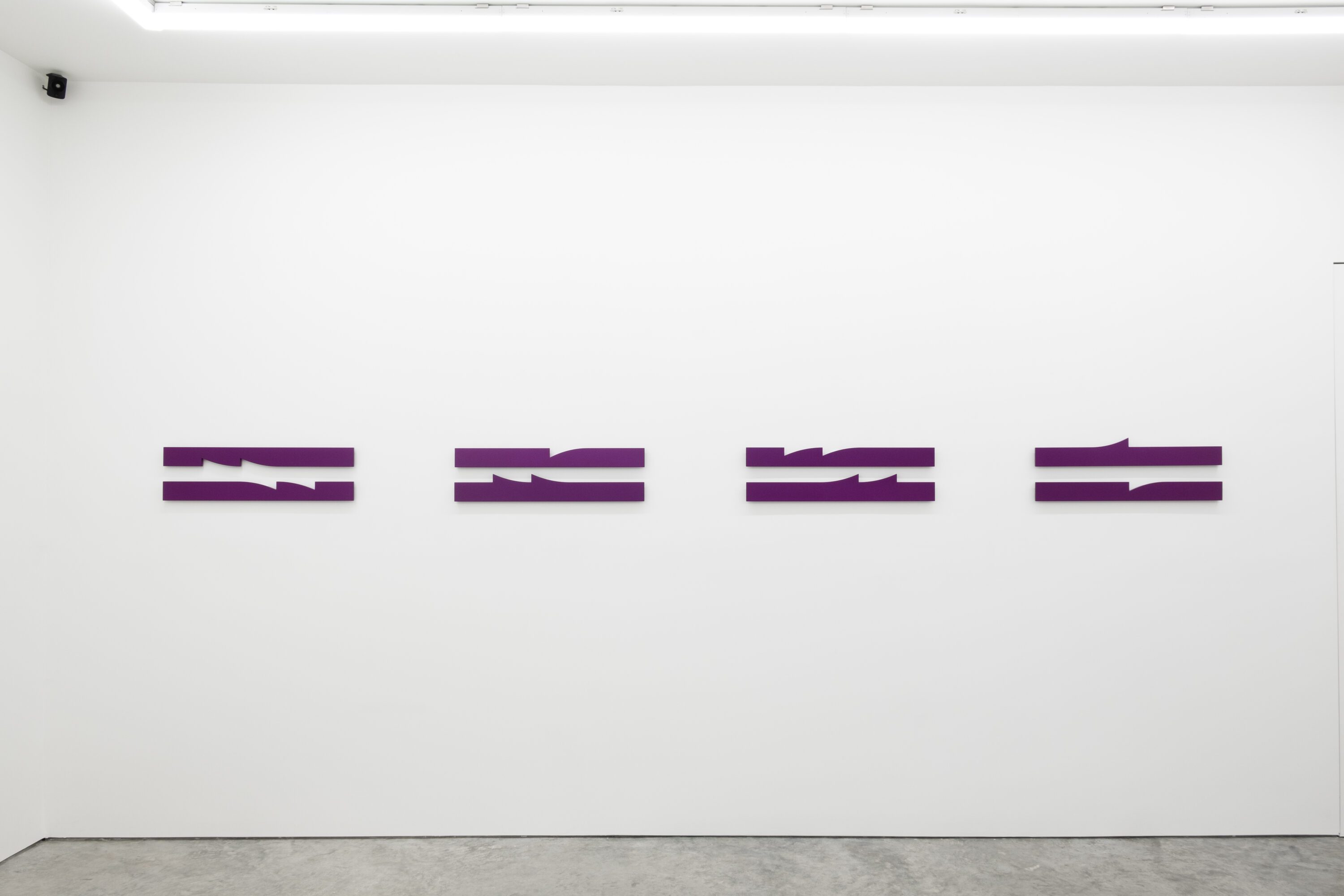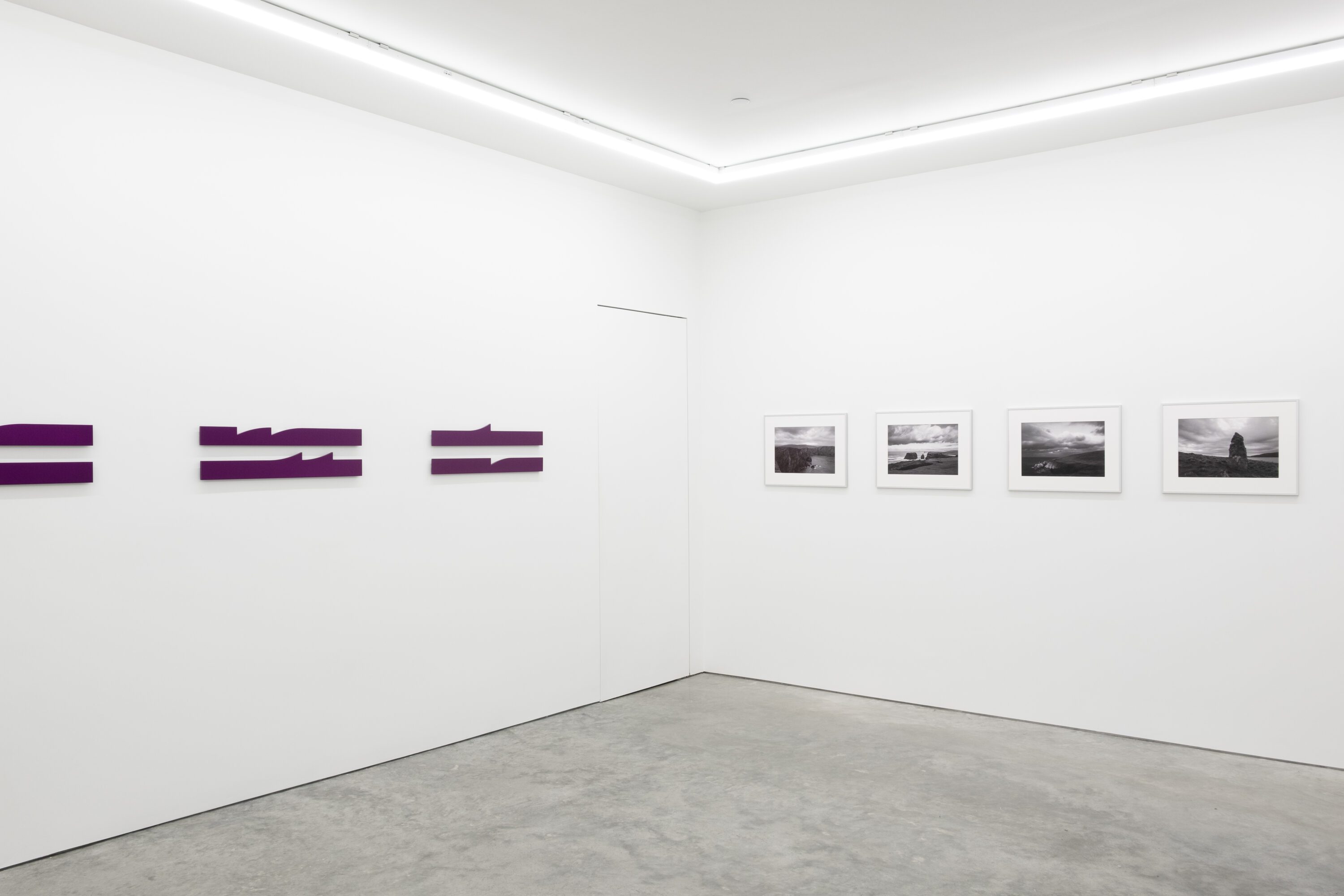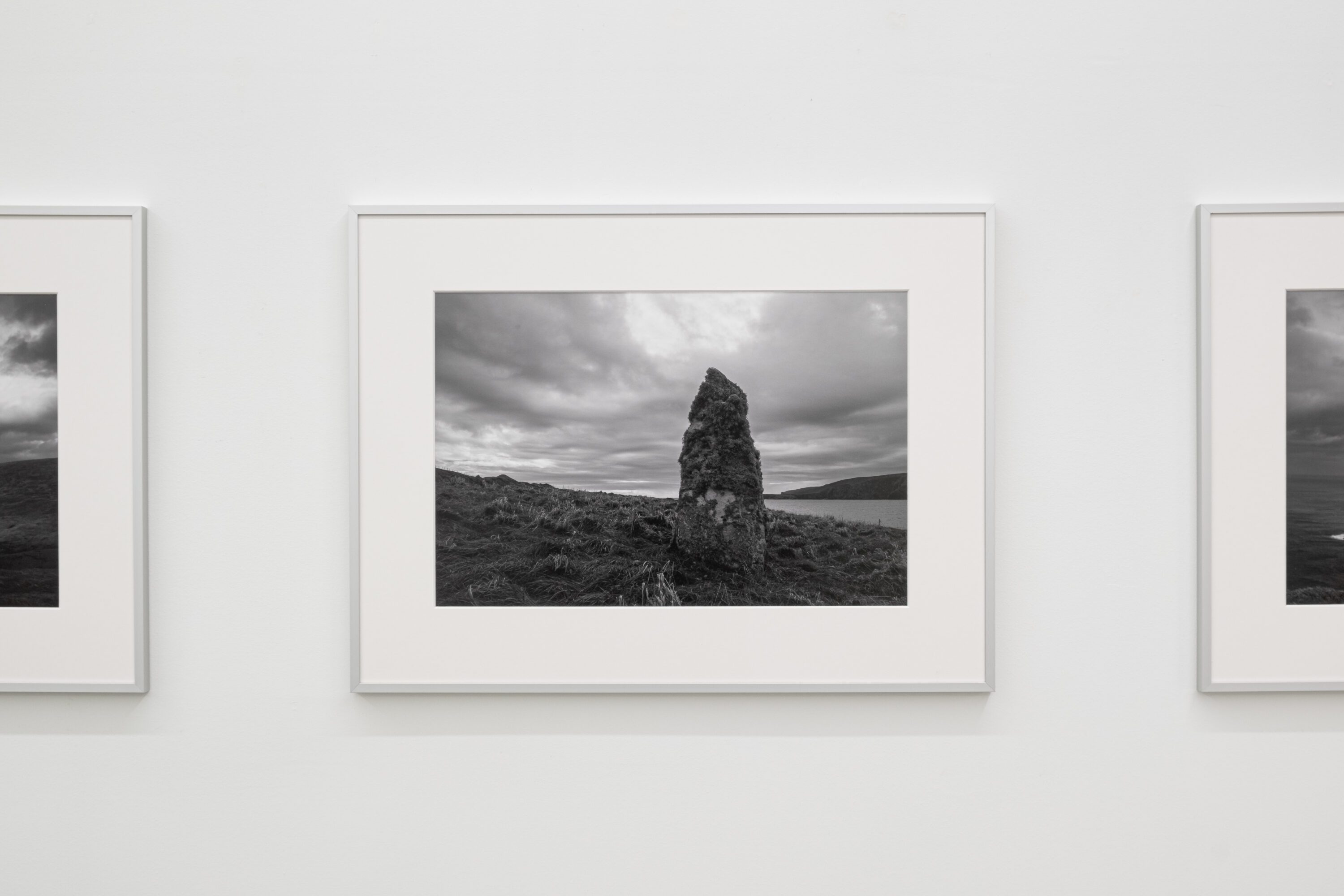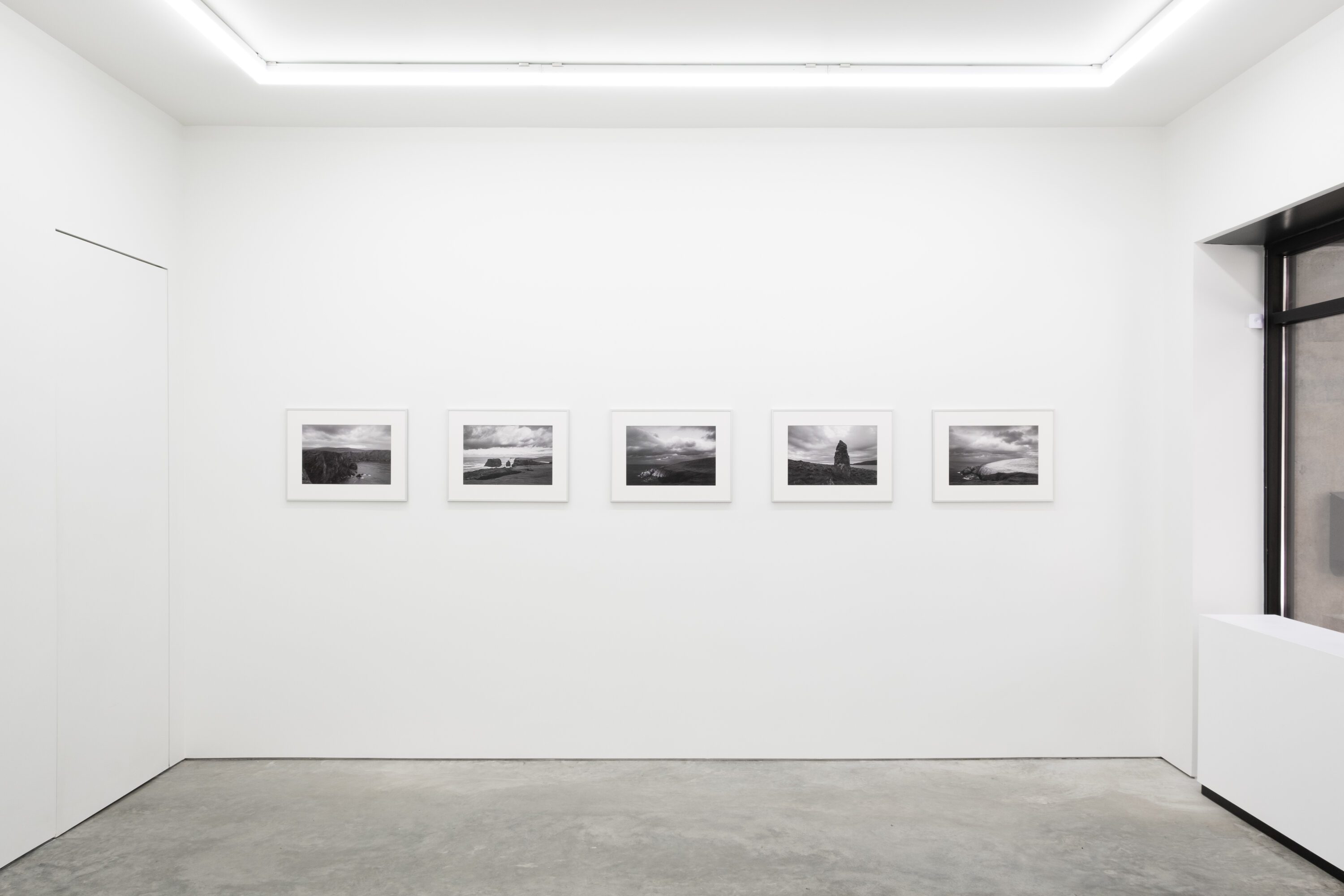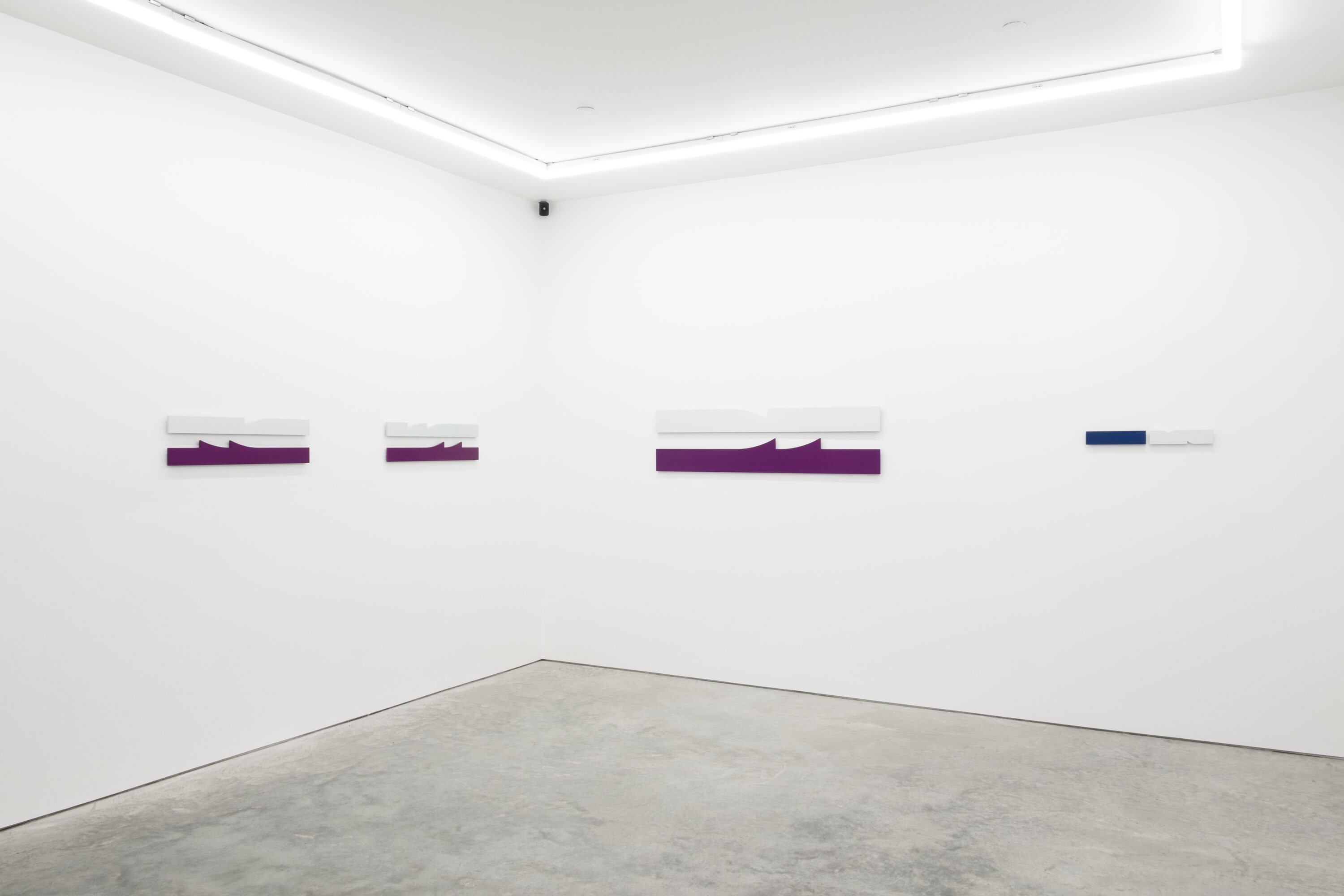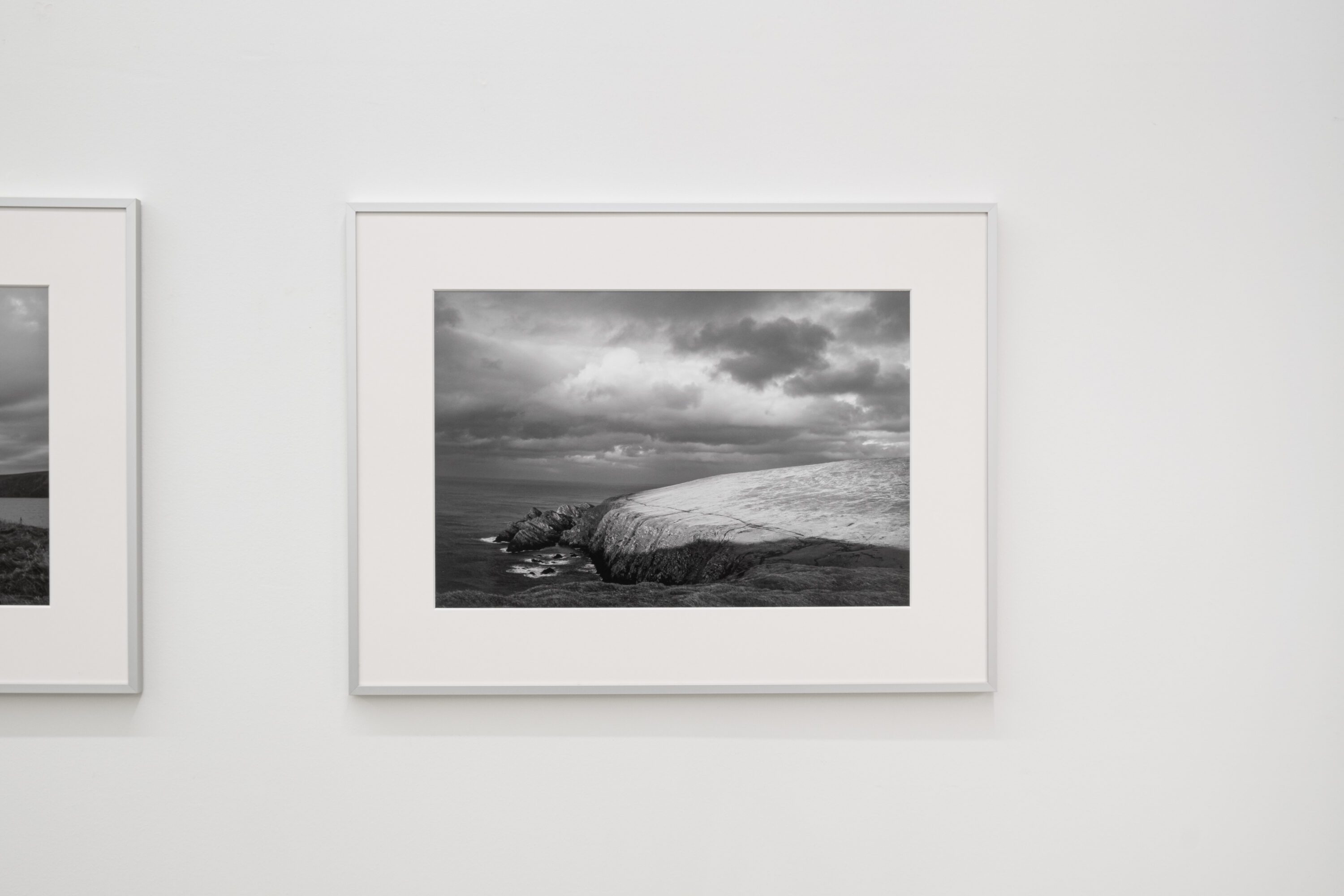Cecilia Vissers: In Hjaltland
At first glance, you won’t see the vast spaces Cecilia Vissers’ works reveal. Voe. Inlet. Bay. Fjord. Each a small word that encompasses an almost unimaginable scale. ‘Voe’ is the space in between the two parts. (Formally, it is the specific Scottish term for “an inlet or narrow bay of the Orkney and Shetland islands” (Merriam-Webster). This word captures the essence of Vissers’ sculptures in that it is about materiality and immateriality. Land and ocean. Coastlines. Just as Vissers’ works are composed of both the positive spaces and the negative spaces, both equally important, each defining the other. This potential—to distill a feeling of expansion into the confines of an intimate space—is one of the key challenges of art, whether material or conceptual. In literature, creating space comes easily, from the phantasmagorical in magical realism to the pragmatic in philosophical parables. Sculpture begins by pushing against its always-predefined materiality, with its inherent limitations.
The challenge of steel sculpture? First, the challenge of the materials themselves—the aluminium and the steel: the material has a will of its own, one has to put a lot of energy in this hard material. Every intervention is irreversible. Second, the challenge of sculpture itself: to transform the apparition of the physical into exploration of something more. Few contemporary artists consistently bring this opposition into clarity more fully and more enigmatically than Cecilia Vissers.
A sculptor and photographer, Vissers uses her unique approaches to representation both to map a place and to push beyond its limits. In The Ocean Path, Vissers makes works be her markers, like directions on a path that point travelers in an intended direction. Even while reducing her subjects to some of their simplest—yet most recognizable—elements, Vissers finds distinction and variation in composition, color, and form. As she explains, “I do a lot of work in series and editions, still, it’s impossible to make an exact copy of a work.” Add in that she sees herself as a sculptor rather than, for example, a painter, and the differentiations between material (metal), subject (the ocean, fjords, water, and the like) become more stunning, and more stark.
And more beautiful. In some ways, her sculptures track the familiar, pulsing with energy and motion. One wave, a sawtooth; another, a sine. It isn’t so much that Vissers vocalizes these terms as it is that in her works we see concrete examples of each. Vissers uses the language of abstraction in some sense reverentially, allowing the fundamental laws of nature to exist and to persist within and through her compositions. She’s not denying these fundamental principles; she’s just not demanding we know them. Examine Stromness Voe, Dales Voe, Whiteness Voe, Voe of Sound, for example, and you’ll see waves that are inverted, opposite, and complementary, each a deep hue of purple suggestive of the aurora borealis. Having spent time in the Shetlands, Vissers is familiar with this natural phenomenon, its colors formed in part by the presence of nitrogen which radiates: purple. This inherent doubling makes Vissers sculptures even more sublime. Whether waves on water or in the sky, on the wall each is both one and the other at precisely the same time.
Her black-and-white photographs extend this exploration, bringing her focus on shape and wave onto land. In The Ripple Stone, Fetlar, Shetland Islands, 2023, that same triangle wave present in her sculptures is now made manifest in shape and form. Set against a descending foreground and flat horizon, the stone—one of many standing stones in the Shetlands and Orkneys—is almost alive, its history mapped in the moss on its surface. Look closely, and the stone is even more revelatory. Vissers’ image captures what looks like a skull, at the left center, and a human-like shape rising above. It is as if she has found the natural successor to Holbein and Rodin, an object so metaphorical that its messages are made concrete.
In many ways, Vissers’ photographs are the natural extensions to her sculptures. The latter minimal, restrained, sequential; the former composed, yet evocative of the wildness she has so deftly distilled in aluminium. These come the closest to intersecting in Hermaness, Unst, Shetland Islands, 2023, in which the bright light on a hillside emerges as shape, form, site, and substance. While Vissers has shared her admiration for and conceptual dialogues with artists including Ellsworth Kelly and Ted Stamm, her photographs are equally an extension of artists like Robert Smithson in how they redefine and reinterpret both history and distance, presence and absence.
What she really asks is that viewers define their expectations of portraiture. Is it fragmentary and evocative, as are her sculptures, or is it more holistic and seemingly accessible, as are her photographs? Either way, she beckons viewers to join her explorations and perambulations. In his “Walking in the City,” Michel de Certeau describes the experience of being lifted out of the city as he ascends one of Manhattan’s skyscrapers. In The Ocean Path, Vissers extends our experience horizontally, pushing us onto and over the waves, up and along the footpaths, past the material and the ephemeral, with no requirement that we follow a distinct path — and the distinct expectation that we can, and will, diverge. Her path is chronicled in images of the Shetlands; yours is mapped in every moment you see and feel the shapes and stories she shares.
Since the mid-nineties Vissers has exhibited her work in the USA (New York, Marfa TX, Houston) and Europe (UK, France, Germany, Switzerland, Belgium etc.). Vissers was a 2009 and 2014 Heinrich Boell Foundation resident fellow. She’s a Brabant Art Foundation Grant recipient. Furthermore, she received stipends from the Dutch Embassy in New York, The Netherland-America Foundation in New York and the Municipality of Meierijstad in the Netherlands.
The wall-based sculptures of Cecilia Vissers are practically flat and fundamentally frontal. They’re made of solid steel or aluminium plates up to 15mm thick. The placement of the work in an exhibition always considers the surrounding architectural environment. The space, the light and the work become one.
1. Hjaltland is one of the earliest names for the Shetland Islands, which were later known as Zetland before acquiring their present name.

Cecilia Vissers
Stromness Voe, purple, 2-part
22.5 x 79 x 1.2 cm
Milled aluminium + coating
2023
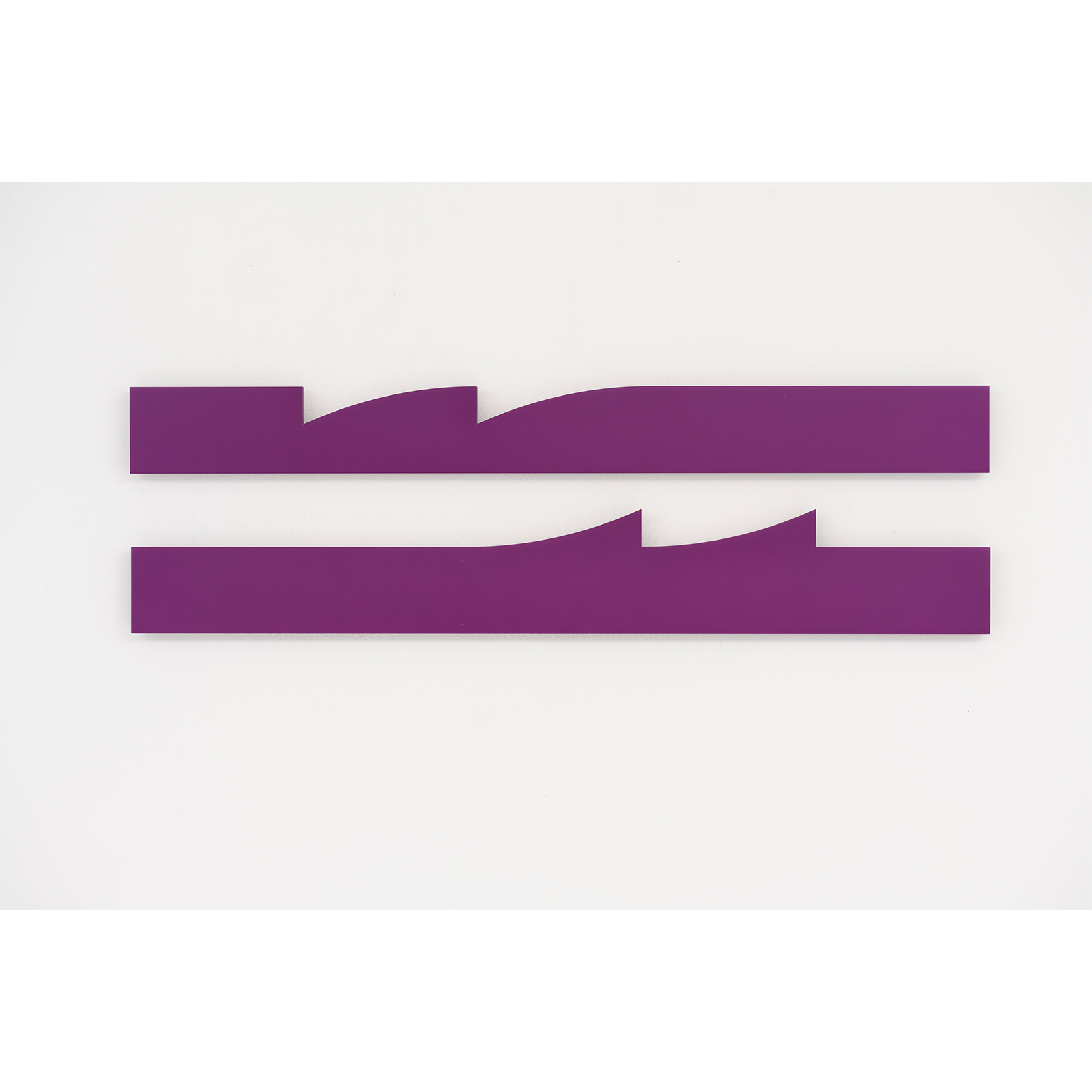
Cecilia Vissers
Dales Voe, purple, 2-part
22.5 x 79 x 1.2 cm
Milled aluminium + coating
2023

Cecilia Vissers
Whiteness Voe, purple, 2-part
22.5 x 79 x 1.2 cm
Milled aluminium + coating
2023
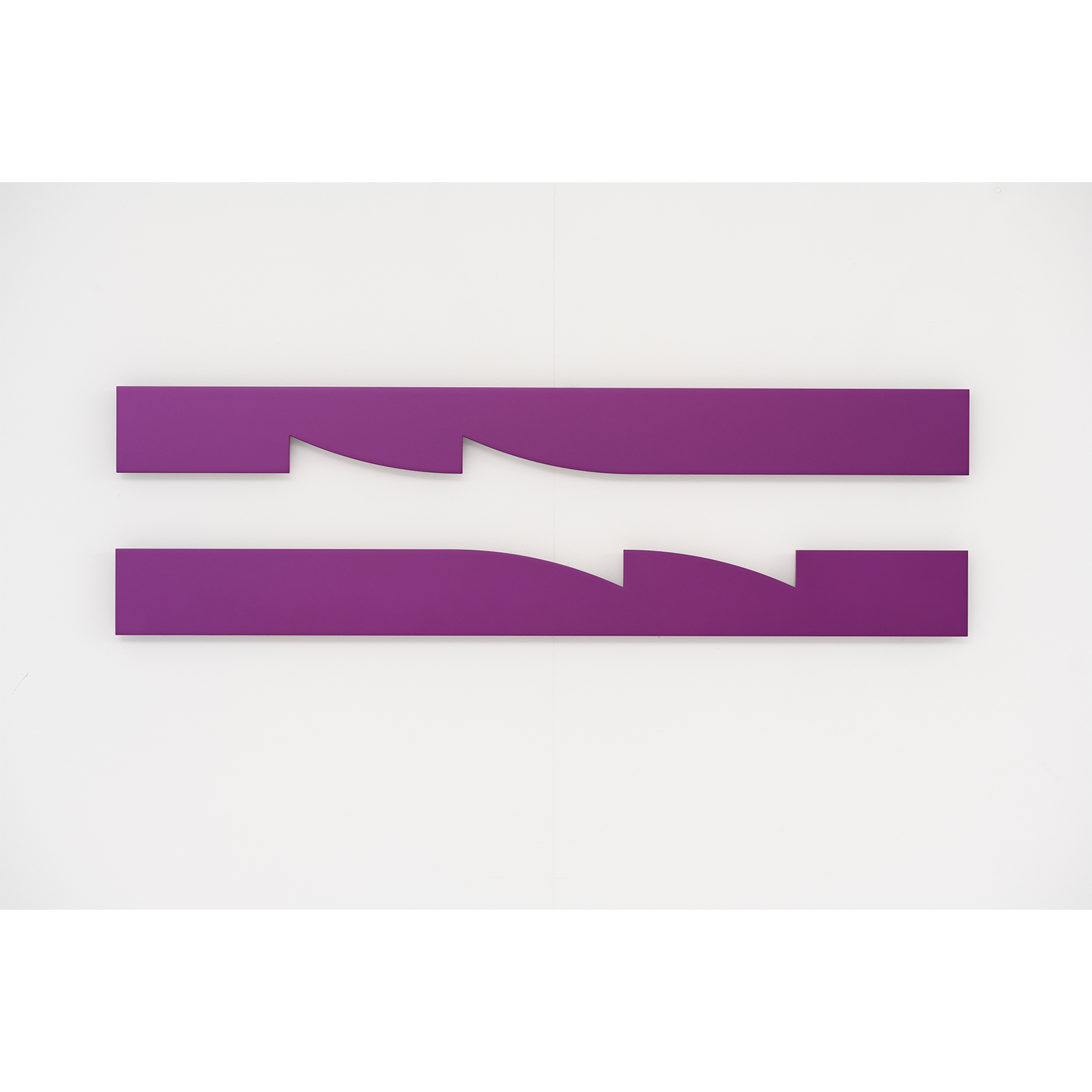
Cecilia Vissers
Voe of Sound, purple, 2-part
22.5 x 79 x 1.2 cm
Milled aluminium + coating
2023
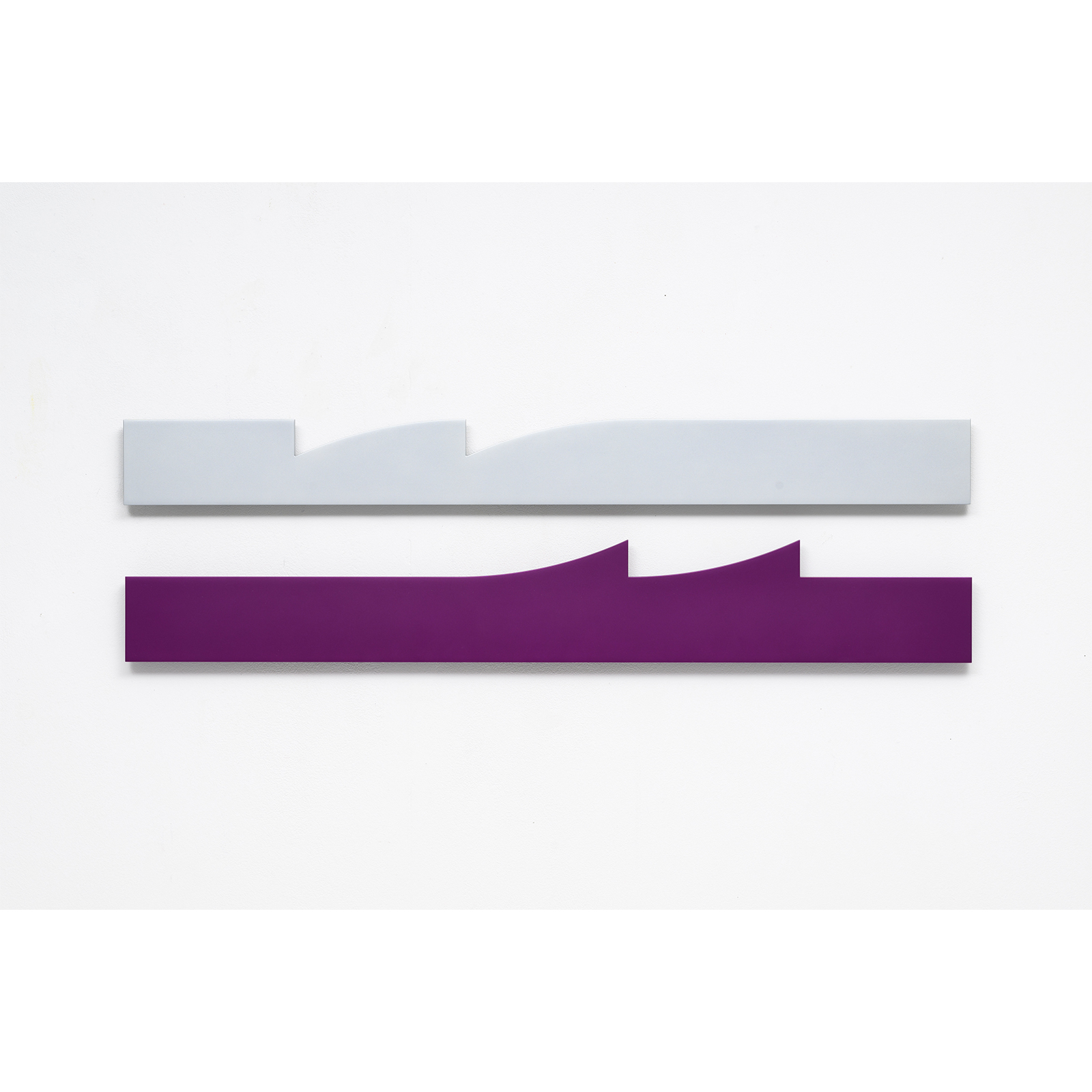
Cecilia Vissers
Dales Voe, purple/silver, 2-part
22.5 x 79 x 1.2 cm
Milled aluminium + coating
2023
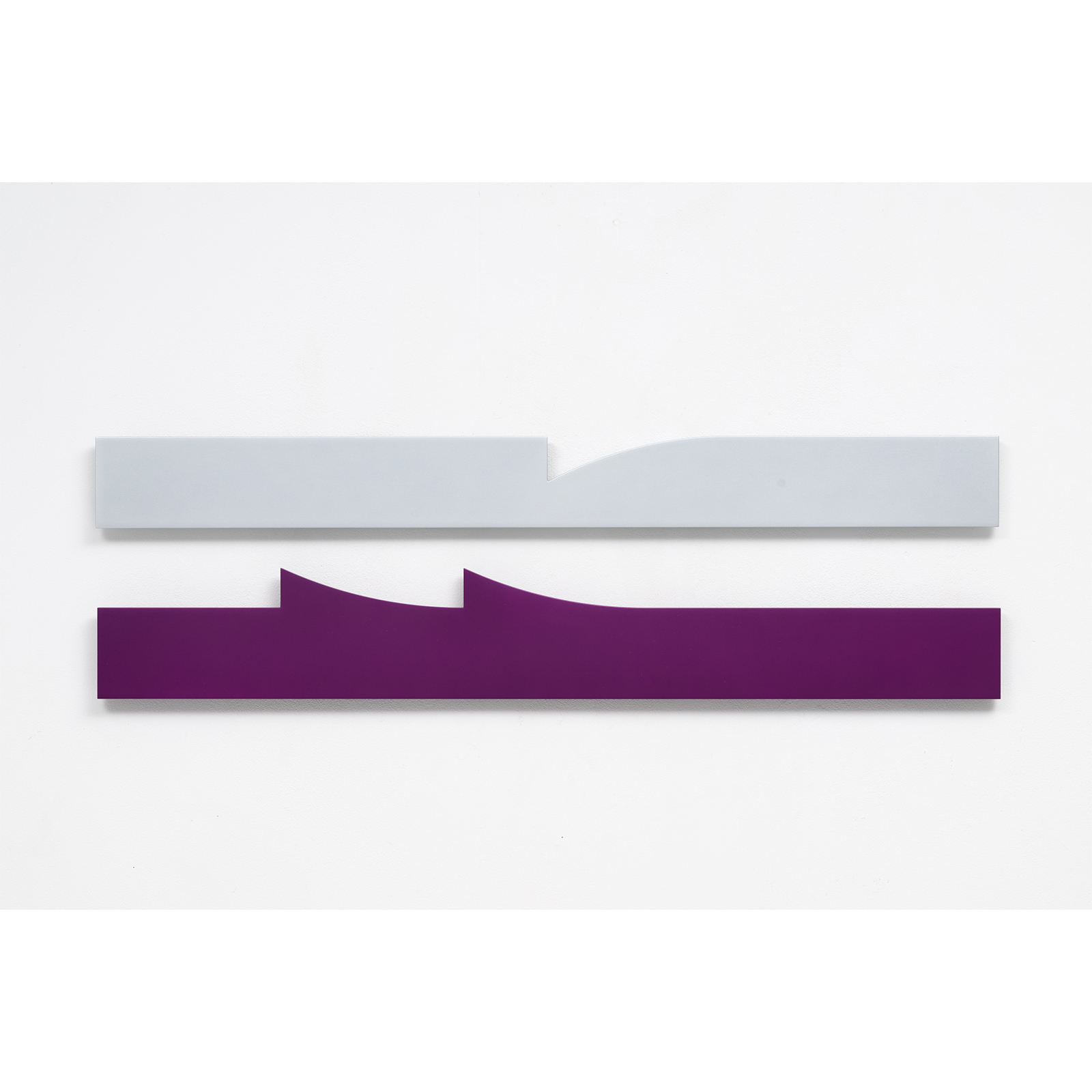
Cecilia Vissers
Whiteness Voe, purple/silver, 2-part
22.5 x 79 x 1.2 cm
Milled aluminium + coating
2023
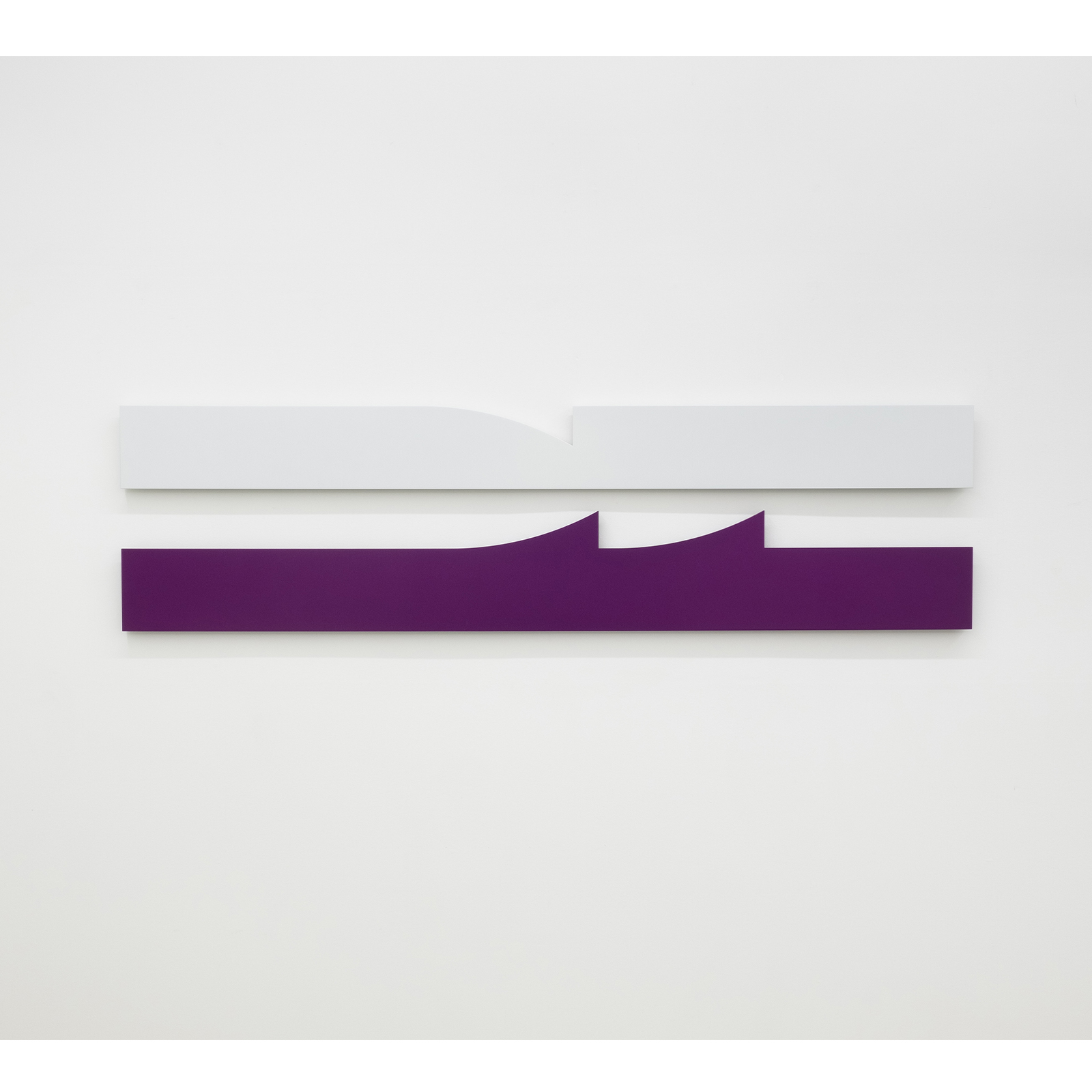
Cecilia Vissers
Whiteness Voe, purple/silver, 2-part (large)
40 x 150 x 1.2 cm
Milled aluminium + coating
2023
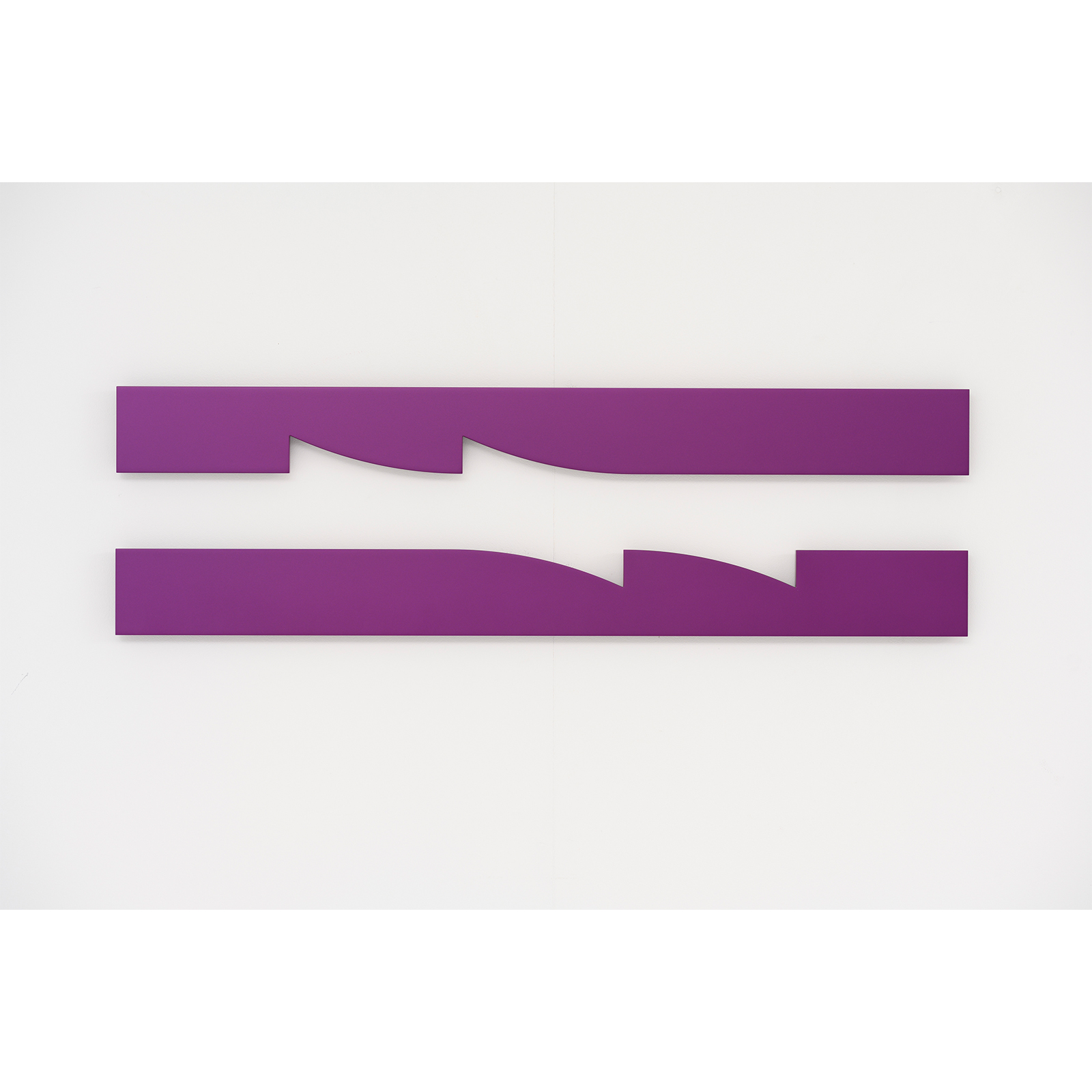
Cecilia Vissers
Voe of Sound, purple/purple, 2-part (large)
40 x 150 x 1.2 cm
Milled aluminium + coating
2023
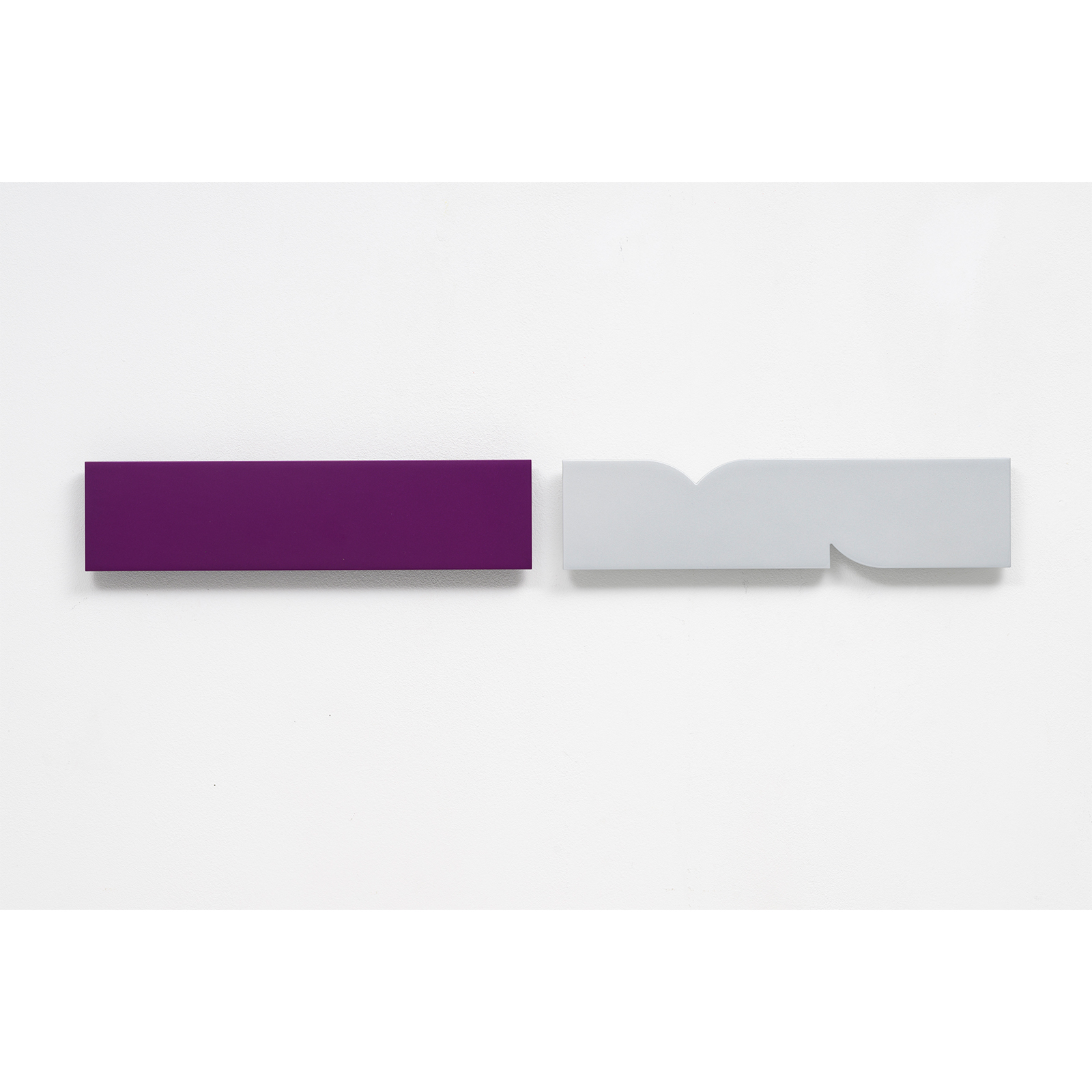
Cecilia Vissers
Blue Mull, purple/silver, 2-part
15 x 58.7 x 1.2 cm
Milled aluminium + coating
2023
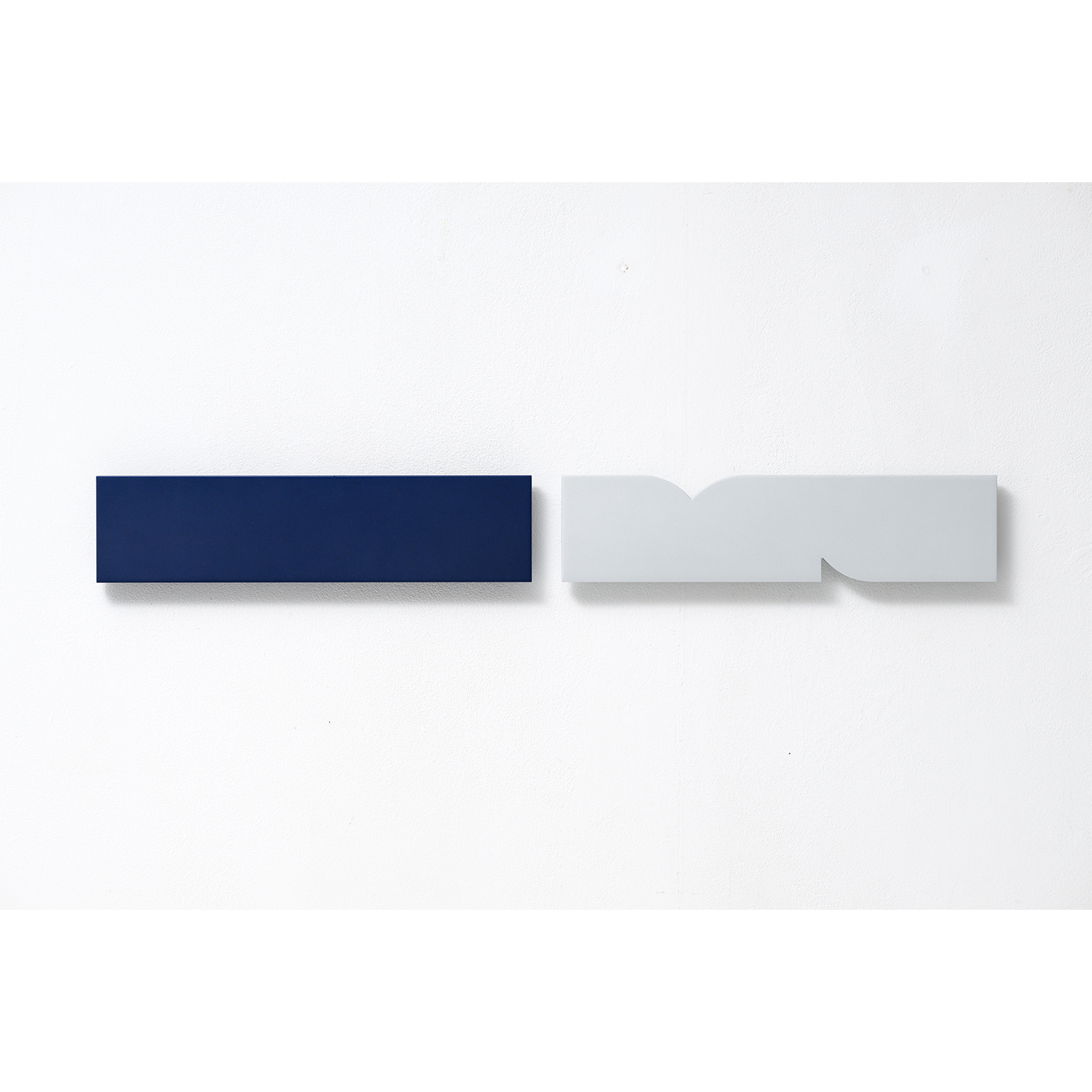
Cecilia Vissers
Blue Mull, blue/silver, 2-part
15 x 58.7 x 1.2 cm
Milled aluminium + coating
2023
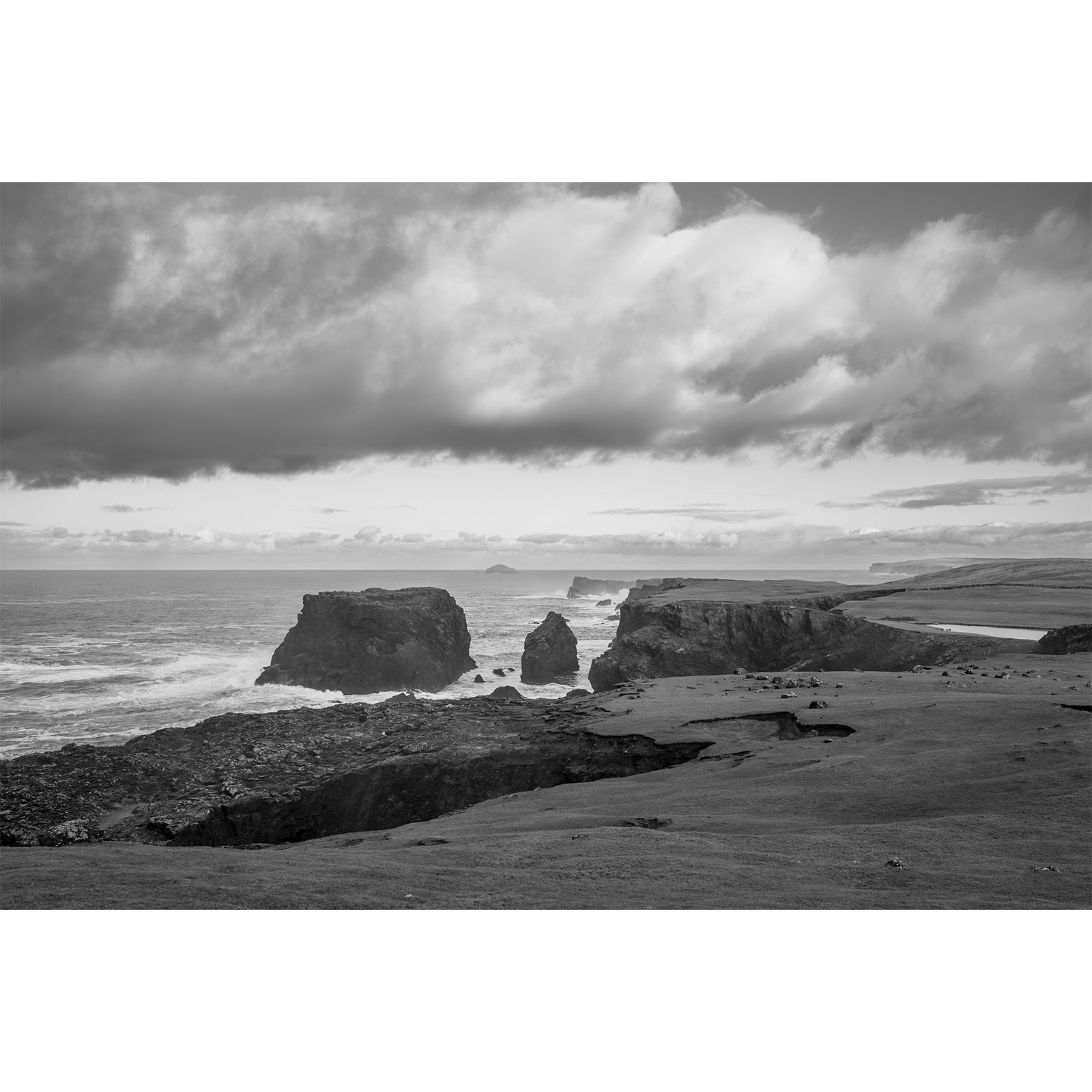
Cecilia Vissers
Eshaness, Northmavine, Shetland Islands
30 x 45 cm
Baryta print
2023
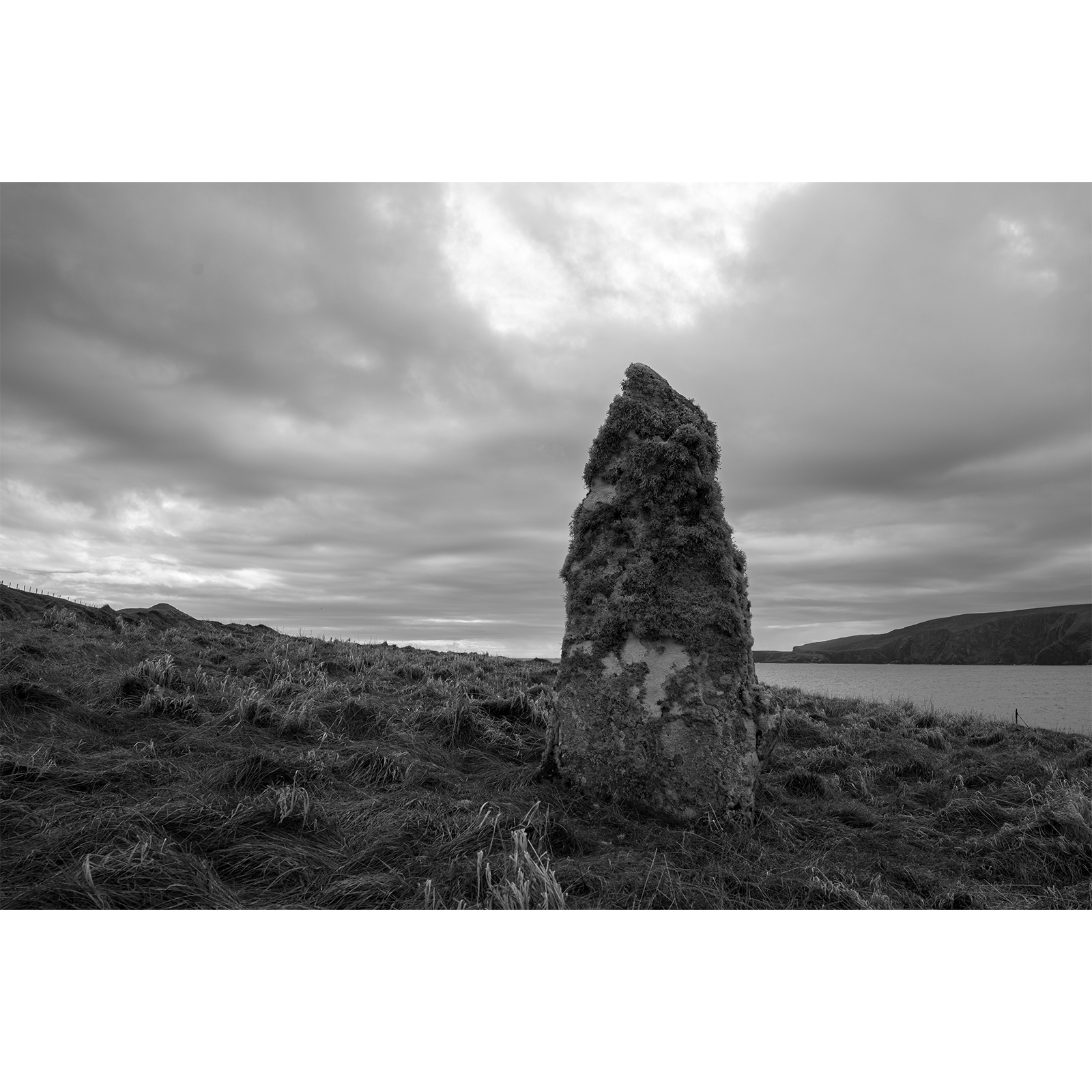
Cecilia Vissers
30 x 45 cm
Baryta print
2023
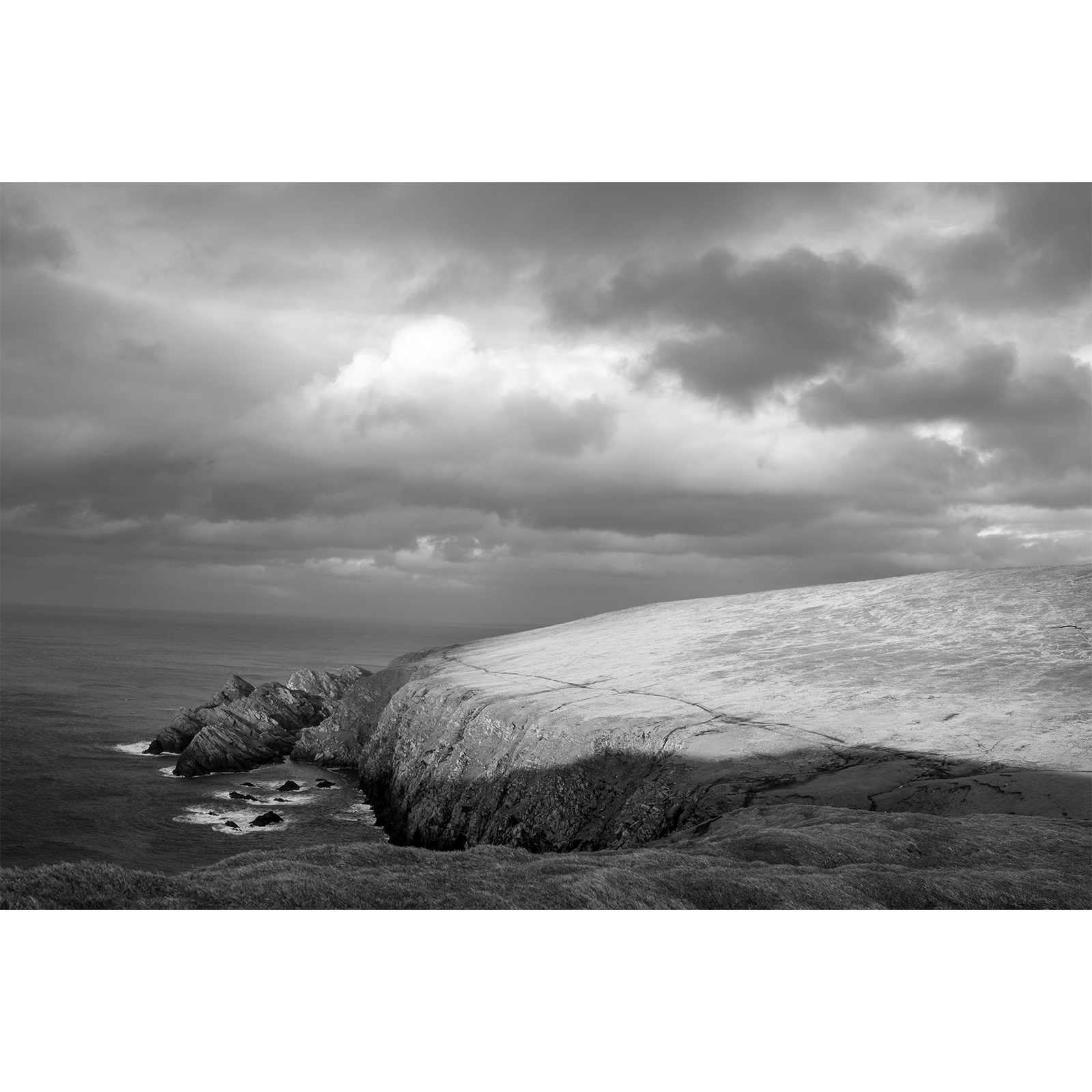
Cecilia Vissers
30 x 45 cm
Baryta print
2023
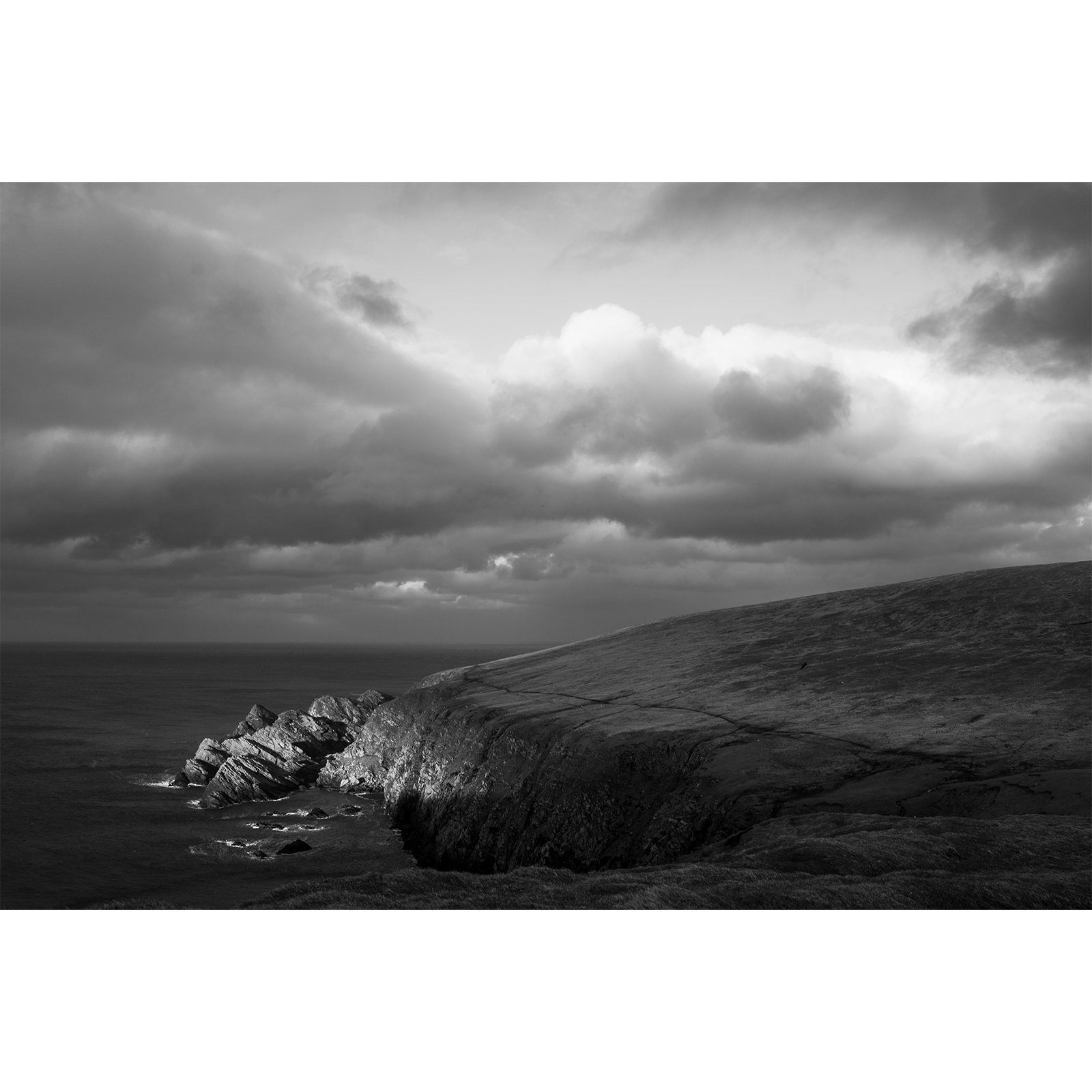
Cecilia Vissers
30 x 45 cm
Baryta print
2023
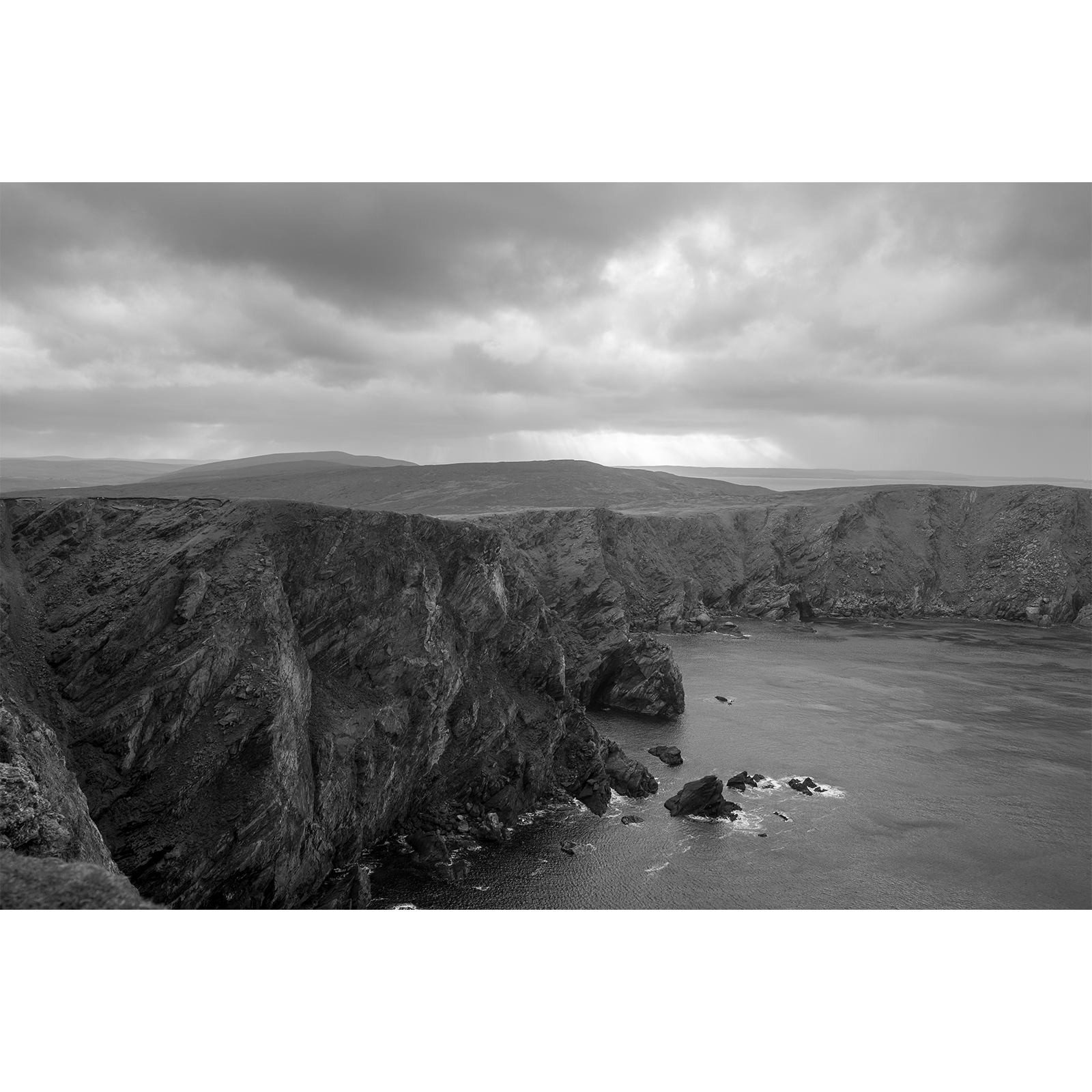
Cecilia Vissers
30 x 45 cm
Baryta print
2023
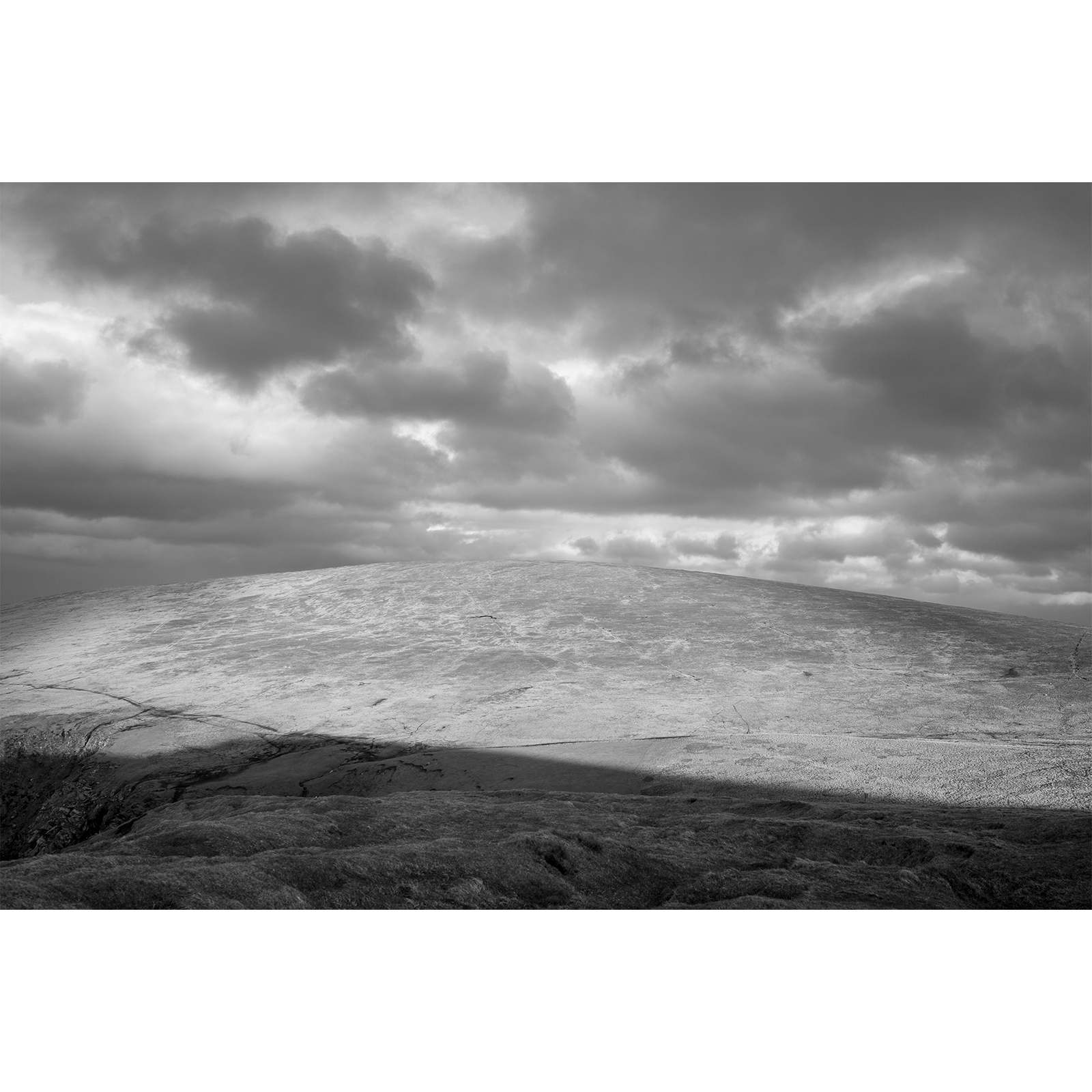
Cecilia Vissers
Hermaness, Unst, Shetland Islands
30 x 45 cm
Baryta print
2023

